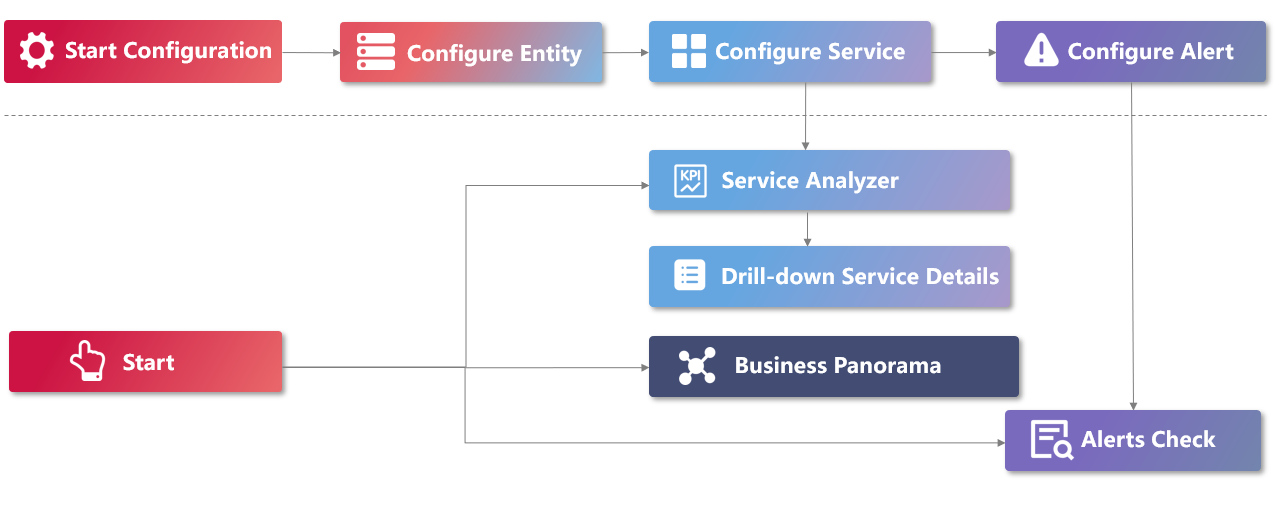Updated at: 2022-12-09 03:49:50
KAI (KPI Analytics Intelligence) module can provide users with an intelligent operation management solution to quickly locate and troubleshoot issues and push anomaly alerts according to the health status of each service in the IT environment, turning reactive into proactive operation.
• The running health status of each service and KPI can be displayed visually through the Service Analyzer to help you quickly locate the root cause of business failures;
• Through the Business Panorama, the relation graph of the operation system can be customized. Visualization view is used to monitor the dependencies between various business services, to achieve global efficient IT operation monitoring and troubleshooting analysis;
• In case of service or KPI abnormal alert during the service operation, the system will promptly send an abnormal alert email or push alert information, and the alert event record can be viewed to help the operator predict risks and complete the troubleshooting in time.
The basic workflow is as follows:

• The running health status of each service and KPI can be displayed visually through the Service Analyzer to help you quickly locate the root cause of business failures;
• Through the Business Panorama, the relation graph of the operation system can be customized. Visualization view is used to monitor the dependencies between various business services, to achieve global efficient IT operation monitoring and troubleshooting analysis;
• In case of service or KPI abnormal alert during the service operation, the system will promptly send an abnormal alert email or push alert information, and the alert event record can be viewed to help the operator predict risks and complete the troubleshooting in time.
The basic workflow is as follows:

< Previous:
Next: >

















